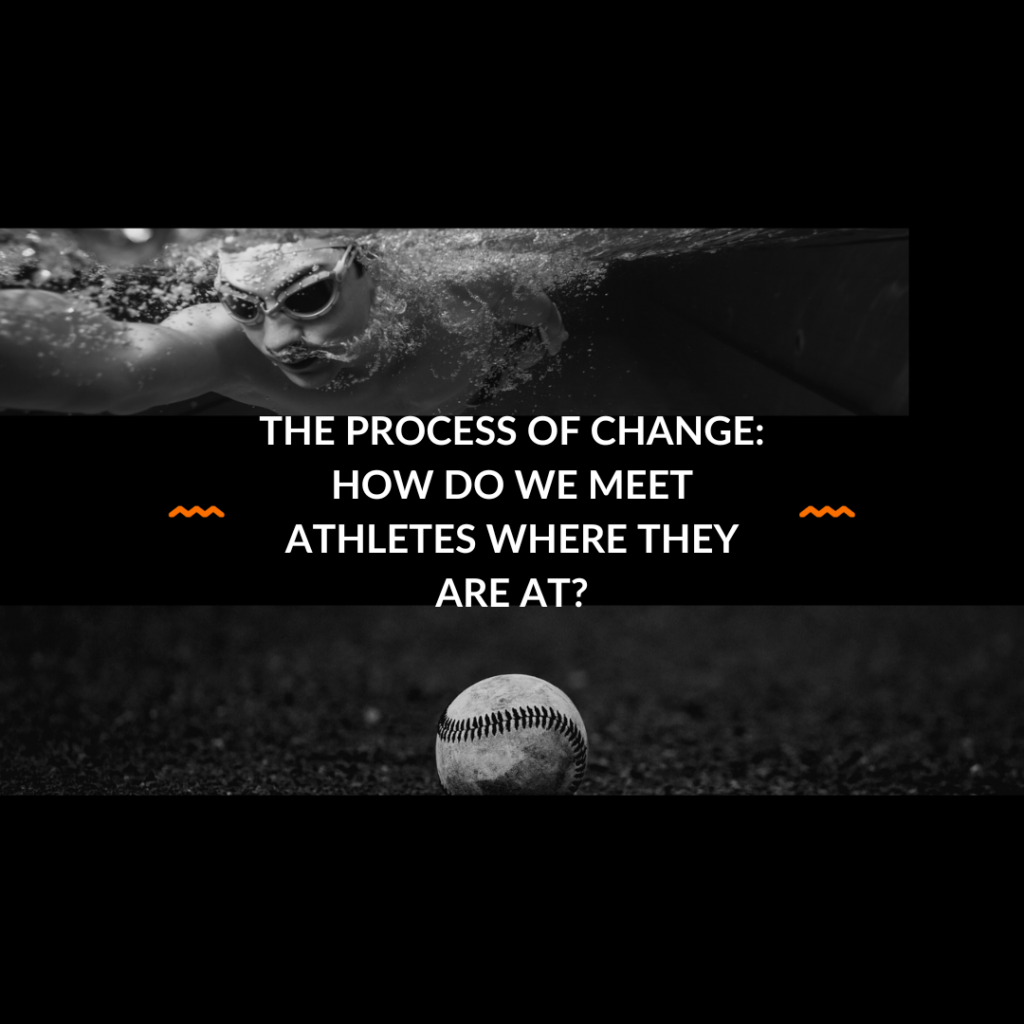I have been thinking a lot about the process of change lately. Mostly, I’ve been thinking about how I can best help my mental performance coaching athletes achieve their goals. I take responsibility for a large part of the change process because helping clients to generate their desired results is my job. However, there is only so much that I can control in the change process. Specifically, I can’t control my client’s desire to take the actions necessary to facilitate change.
As usual, I always ask myself what I can do better when my clients. One answer that comes up quite a bit is that I must do a better job of assessing readiness to change when I start working with a young athlete. Further, I must understand the reasons that a client wants to change. Is it because they want to change or because somebody else wants them to change?
I have also been thinking about the process of change lately because I am approaching my 10-year anniversary in recovery from a gambling addiction. It is hard to believe that it has been 10 years since the hardest period of my life. So much change has occurred in my life since then. I changed my career and moved into the sport psychology field. I am now divorced. However, most importantly I have stayed abstinent from a behavior that severely damaged my life for many years.
On July 29, 2012, I signaled my readiness to change by attending my first Gamblers Anonymous meeting in Brooklyn, New York on a Sunday morning. No one forced me to go. I chose to stop gambling at that point after about six weeks of intense contemplation. I didn’t just wake up one day thinking, “Well, I should really stop gambling.” My contemplation of that change was motivated by a very severe panic attack that scared the you-know-what out of me. Without having that panic attack, I’m not sure I would have made a change at that point. Maybe it would have taken longer. Maybe that point never would have come.
I can honestly say that I was willing to do anything in my power to stop gambling and to stay stopped. My motivation to succeed was mostly autonomous. Yes, I wanted to stop gambling because it was causing anxiety and because it was hurting my family life. However, I truly wanted to change because I knew that I could not achieve my potential in life if I continued to gamble compulsively. You could say that I reached my “rock bottom.”
So that brings me back to mental skills training… I have been thinking more about why my clients and their families want to work with me. Is it motivated by the parents, who often contact me first, or by the athletes, who are often unsure about what is to come? Is it to fix a problem similar to a physical therapist or is it to proactively build mental strength similar to going to an athletic trainer? How many people enter the mental performance coaching process truly at rock bottom?
My experience has been that families are often curious about mental performance coaching when athletic performance doesn’t align with all of the time, effort, and money put into physical training. I have worked with one athlete who had an advanced case of the yips, which was extremely challenging for me. I would classify this case as being near a rock bottom. However, most athletes are struggling with mental and emotional patterns that are roadblocks, but often not so debilitating that they are intensely motivated to do the work I ask them to do.
As well-known sport psychology consultant Dr. Bob Rotella suggested, “We don’t need any more techniques in sport psychology. We need more ways to get athletes to use the techniques we have” (Leffingwell et al, 2001, p. 169).
Philosophically, I couldn’t agree with this more. One of my core values as a practitioner is intent over content, meaning that the nature or complexities of the interventions I introduce are secondary to the intention to help the young person. Sometimes, the simplest approach is the most effective, such as actively listening to what the client has to say rather than trying to fix something when they are not yet ready to fix it. Similarly, Leffingwell and colleagues suggest matching mental performance interventions to the client’s “stage of change” (p. 171).
Understanding my clients’ motivations and their readiness to change is critical for me to meet them where they are at. Further, it is critical to assess whether or not my interventions are effective, whether or not my client’s are committing to do the work, or both.
The Transtheoretical Model of Change (TTM) is used across disciplines within psychology to understand the process of personal change. This theoretical model has similarly been applied to understand both the process of changing gambling behavior and the process of engaging in mental skills training (Kushnir et al., 2015; Leffingwell et al.). TTM identified five stages of change: (1) precontemplation, (2) contemplation, (3) preparation, (4) action, and (5) maintenance.
In my experience with gambling, I moved from precontemplation to action in less than two months. My path to change was very fast. Thankfully, I have been in the maintenance stage of change for almost 10 years largely due to my willingness to put in the effort to remain abstinent from gambling. This included going to therapy, multiple 12-step meetings per week, and sponsoring others for much of that 10 years. I was motivated and committed to doing the work.
My experience in working with clients seems a bit different. Often it feels like the parents’ readiness for their athlete to change is greater than the athlete’s readiness themselves. That said, I always speak to young athletes before we formally start working together to understand their motivations and help educate them on what mental performance coaching is all about. If we make it to that point, then we’re already in the contemplation stage of change.
Ultimately, I think the biggest challenge in my work is managing expectations. The rate at which change happens depends on many factors, not the least of which is the client’s motivation to actively engage in the mental performance coaching process. Clients who just show up to sessions aren’t as likely to make changes as quickly as those who practice what I introduce to them during and in-between sessions. Nevertheless, changes are likely to come eventually if a client shows up to sessions ready to engage in the process on a regular basis. However, will those changes come fast enough for the client’s parents?
I am constantly evaluating my coaching approach to best serve my clients. I do so based upon feedback from my athletes and parents, as well my own self-reflections. As I tell the families I work with, there is no magic formula to mental performance coaching. Thus, it requires critical thinking, creativity, and cognitive (mental) flexibility to continually improve at helping my clients to reach their goals.
Normally, I offer three tips that readers can take away and use to their advantage. However, I am going to give myself three tips that I can use to help my clients achieve the results they would like to see more expeditiously:
- Better understand readiness to change upfront. I typically have a clear understanding of why my clients are seeking mental performance coaching. However, I need to do a better job of assessing readiness to change. Just because a client wants to improve their mental game, doesn’t mean they will take the actions necessary to actually do it.
- Facilitate clearer communication with parents and athletes. I have placed a great emphasis on coordinating communication between myself, athletes, and parents. We call this “triangulation” in sport psychology. However, I would benefit from distinguishing differences in the motivations of parents and athletes in the initial stages of working together.
- Be patient. As much as I feel compelled to introduce actionable mental skills interventions immediately, some athletes aren’t far enough along the readiness to change spectrum to actually do the work. Going back to point #2 above, I must go out of my way to communicate with parents that their athlete is not ready to dive into the guts of the work yet. Rather, we might just need to spend more time building rapport upfront.
References
Kushnir, V., Godinho, A., Hodgins, D.C., Hendershot, C.S., & Cunningham, J.A. (2016). Motivation to quit or reduce gambling: Associations between self-determination theory and the transtheoretical model. Journal of Addictive Diseases, 35(1), 58-65.
Leffingwell, T.R., Rider, S.P., & Williams, J.M. (2001). Application of the transtheoretical model to psychological skills training. The Sport Psychologist, 15, 168-187.

